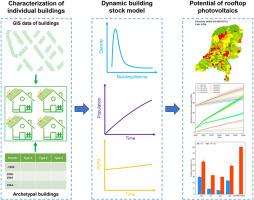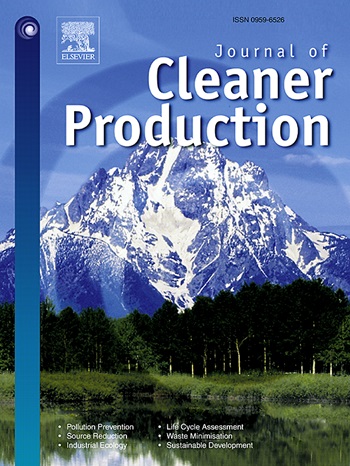The potential of rooftop photovoltaics to meet Dutch residential electricity demand under heat transition scenarios
IF 10
1区 环境科学与生态学
Q1 ENGINEERING, ENVIRONMENTAL
引用次数: 0
Abstract
Rooftop photovoltaics (RPVs) are essential for advancing energy transition and achieving climate goals. However, there is limited understanding of their future potential at a granular geographical level and their potential to meet future electricity demand from buildings under different heat transition scenarios. This study presents a comprehensive assessment of the RPV potential at the individual building level in the Netherlands, considering detailed building stock dynamics, renovation strategies, and heat transition scenarios. The results show that RPVs currently generate 3.86 TWh of electricity, with the potential to increase to 19.52 TWh. The total electricity demand of the residential building sector is about 27.26 TWh in 2020, which can increase significantly to 34.19-45.11 TWh by 2050, depending on heat pump penetration and renovation standards. RPVs alone can potentially meet about 43-57% of this electricity demand and save up to 11.32 Mt CO2-eq in 2050 (26% of current operational carbon emissions) if public grid electricity could be replaced by RPV electricity. However, the actual contribution of RPVs to the reduction/decarbonization of household electricity is subject to large uncertainties due to both the momentary and seasonal mismatch between RPV supply and electricity demand. Future research could increase the temporal resolution of our model to better explore the real potential of RPVs for targeted electrification and decarbonization in the building sector.

屋顶光伏发电在热转换情景下满足荷兰住宅电力需求的潜力
屋顶光伏(rpv)对于推进能源转型和实现气候目标至关重要。然而,人们对它们在颗粒地理水平上的未来潜力以及它们在不同热转换情景下满足建筑物未来电力需求的潜力的了解有限。本研究对荷兰单个建筑水平的RPV潜力进行了全面评估,考虑了详细的建筑存量动态、改造策略和热转换情景。结果表明,rpv目前的发电量为3.86 TWh,有可能增加到19.52 TWh。2020年,住宅建筑部门的总电力需求约为27.26太瓦时,到2050年,根据热泵普及率和改造标准,这一需求可大幅增加至34.19-45.11太瓦时。如果公共电网电力可以被RPV电力取代,仅RPV就可以满足约43-57%的电力需求,并在2050年节省高达1132万吨二氧化碳当量(占当前运营碳排放量的26%)。然而,由于RPV供应与电力需求之间的瞬时和季节性不匹配,RPV对家庭电力减少/脱碳的实际贡献受到很大的不确定性的影响。未来的研究可以增加我们模型的时间分辨率,以更好地探索RPVs在建筑领域有针对性的电气化和脱碳的真正潜力。
本文章由计算机程序翻译,如有差异,请以英文原文为准。
求助全文
约1分钟内获得全文
求助全文
来源期刊

Journal of Cleaner Production
环境科学-工程:环境
CiteScore
20.40
自引率
9.00%
发文量
4720
审稿时长
111 days
期刊介绍:
The Journal of Cleaner Production is an international, transdisciplinary journal that addresses and discusses theoretical and practical Cleaner Production, Environmental, and Sustainability issues. It aims to help societies become more sustainable by focusing on the concept of 'Cleaner Production', which aims at preventing waste production and increasing efficiencies in energy, water, resources, and human capital use. The journal serves as a platform for corporations, governments, education institutions, regions, and societies to engage in discussions and research related to Cleaner Production, environmental, and sustainability practices.
 求助内容:
求助内容: 应助结果提醒方式:
应助结果提醒方式:


